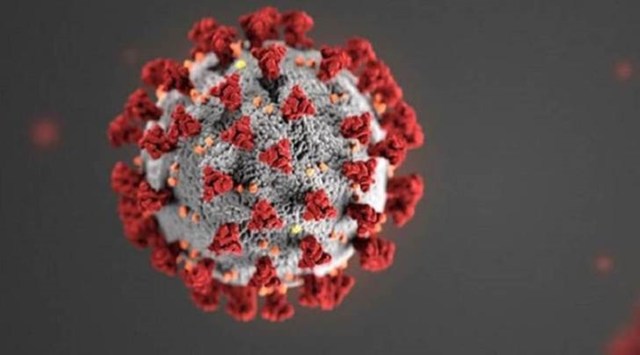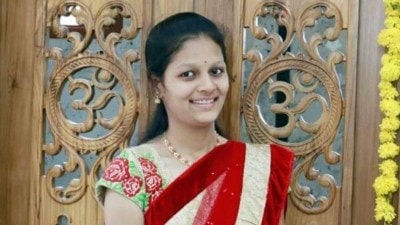- India
- International
Maharashtra: double mutant found in 61% samples tested
State health officials said the double variant’s role cannot be ruled out in Maharashtra’s second wave. The state is recording over 50,000 new cases every day and has 5.64 lakh active cases, half of India’s Covid burden.
 Before the pandemic, research grants to study a loss of smell were hard to come by, said Danielle Reed, associate director of the Monell Chemical Senses Center, a nonprofit research group in Philadelphia.
Before the pandemic, research grants to study a loss of smell were hard to come by, said Danielle Reed, associate director of the Monell Chemical Senses Center, a nonprofit research group in Philadelphia.The National Institute of Virology (NIV), Pune, has shared data with laboratories in Maharashtra showing that of 361 Covid-19 samples taken in Maharashtra from January to March and genome sequenced, 61% or 220 had the double mutation E484Q and L452R, now classified as B.1.617 lineage.
On March 24, the Central government had announced the detection of a double mutant variant in “15-20% samples in Maharashtra” but did not link the variant with the second surge in the state.
At a meeting on April 10, NIV officials made a presentation to all district heads of government laboratories. The meeting was organised by the Directorate of Medical Education and Research under the Medical Education and Drugs Department of Maharashtra.
The genome sequencing results were shared in the presentation, but officials said the state government is yet to receive a written report on this. “It has been communicated to us only verbally,” said an official. Health Minister Rajesh Tope said the state government had asked the Centre for a detailed report on the genome sequencing of all the Maharashtra samples.
State health officials said the double variant’s role cannot be ruled out in Maharashtra’s second wave. The state is recording over 50,000 new cases every day and has 5.64 lakh active cases, half of India’s Covid burden.

Officials said they had repeatedly asked the Centre if the mutation was of concern and whether a different strategy needs to be adopted. “The Centre has maintained that there is no need to change the strategy,” said Maharashtra Health Secretary Dr Pradeep Vyas.
NIV Director Dr Priya Abraham refused to comment. But Dr Sujeet Singh, Director, National Centre for Disease Control, said, “It is a variant of interest now. But the number of samples are very few from these districts and therefore we cannot directly conclude that the surge is caused by the variant.” Singh added that B.1.617 lineage has been found in a few samples in Delhi too.
NIV data shows that in January, the double mutant variant B.1.617 first appeared in three samples in Akola and one sample in Thane. In February the highly contagious variant was noted in more than 50% samples in 13 districts, including Akola, Amravati, Bhandara, Hingoli, Gondia, Chandrapur, Nagpur, Pune, Wardha and Yavatmal. Between 10 and 30 samples were sequenced from each district. In March, in samples sequenced from Aurangabad, Mumbai, Jalna, Palghar, Nanded, from each district, two to 14 samples carried this variant.
The B.1.617 consists of two mutations in spike protein, E484Q and L452R. E484Q has the ability to slip past the immune response, and L452R too is an escape mutation. Both together are more infectious, highly transmissible, although less virulent. Akola and Amravati have shown the maximum burden. In 85.2% of the sequenced samples in Akola (27 out of 34) and in 69.3% samples in Amravati (68 out of 98), the B.1.617 lineage was found.
Experts and health officials in Maharashtra and other states dealing with huge numbers of infections in the second surge have demanded a faster turnaround time for genome sequencing. “Entire families are getting infected. This is something we flagged two months ago. This variant is fast spreading, has exponential growth and has strained our health system. And we need district-wise sequencing to understand local viral behaviour,” said Dr Shashank Joshi, member of the State Covid Task Force. Dr Om Srivastava, also a member of the Task force, said, “It is critical to have genome sequencing results as soon as possible, if possible within three days. The pattern of the new variants is unpredictable,” he said.
Dr Gagandeep Kang, professor of microbiology at Christian Medical College, Vellore, said, “We need to track mutation real time. I am worried about the quality of surveillance since we are overwhelmed with cases.” She said sequencing data, clinical data and epidemiological data must be put together to understand how a mutation will affect. “We know that the South African variant is more capable of escaping immune response. We know that the UK variant is the most transmissible. But we know nothing about the B.1.617 variant. Because we are not putting together data to draw conclusions.”
India is sequencing less than 1% of Covid-19 samples.
Maharashtra officials said genome sequencing data would also help drive the containment strategy. “We sent the samples in February. Till date we have no official report stating how many samples carried a mutation or how rampant the double mutation is. It is two months due,” a senior official from Amravati said.
Incidentally, both the suspected cases of re-infection in Amravati in February had the B.1.617 lineage. Eight samples had the N440K mutation, which is associated with re-infections and has been found in Andhra Pradesh, Telangana, Karnataka and North India.
In February, Amravati had seen a sudden surge — from 150 to close to 1,000 daily cases. It announced a 14-day lockdown till March 8 which led to a dip in cases. From 6,446 active cases as on February 25, the current numbers in the district stand at 3,443. The district is however again seeing a slow rise in daily infections.
Must Read
Apr 19: Latest News
- 01
- 02
- 03
- 04
- 05






































